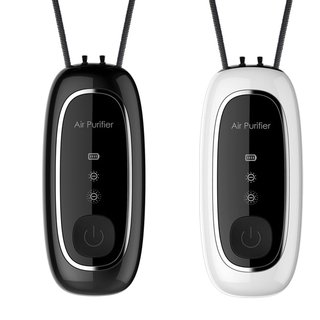The Benefits and Considerations of Negative Ionizers
Wiki Article
Negative ionizers, also referred to as ion generators or air ionizers, are devices made to improve air quality by releasing negatively charged ions to the environment. These ions adhere to airborne particles including dust, pollen, smoke, and bacteria, causing them to clump together and drop totally out of the air. As a result, negative ionizers in many cases are marketed like a solution for cleaner, fresher indoor air.

How Negative Ionizers Work
Negative ionizers work with a high-voltage charge to generate negative ions, which are essentially oxygen atoms by having an extra electron. When these ions are released to the air, they find and bond with positively charged particles like allergens and pollutants. This process makes particles fat to stay airborne, reducing their presence in the breathable atmosphere.
Benefits of Negative Ionizers
Airborne Particle Reduction
Negative ionizers might help remove dust, pet dander, pollen, and smoke particles from your air, making the planet feel cleaner.
Odor Control
By neutralizing particles that carry odors, ionizers may reduce unpleasant smells from cooking, pets, or smoking.
Allergy Relief
Many users report relief from allergy symptoms because fewer allergens remain suspended within the air.
Mood and Energy Boost
Some studies declare that negative ions could possibly have psychological benefits, like enhancing mood and increasing energy levels, particularly in environments with stagnant air.
Low Maintenance
Unlike HEPA filters, ionizers typically not one of them frequent filter replacements, driving them to cost-effective inside long run.
Considerations and Drawbacks
While negative ionizers offer many perks, they also come with important considerations:
Ozone Production: Some ionizers produce trace amounts of ozone like a byproduct, which may be harmful if levels exceed safety standards. It is essential to choose models certified for low ozone emissions.
Surface Dust Accumulation: Since particles fallout of the air, they often times settle on furniture, floors, and walls, requiring regular cleaning.
Not a Complete Solution: Negative ionizers may well not effectively capture larger contaminants including mold spores or volatile organic compounds (VOCs). Pairing them other air purification methods, like HEPA filters, may provide better results.
Limited Coverage: Performance may differ depending on size of room, humidity, and airflow.
Applications of Negative Ionizers
Homes and Offices: For improving indoor air quality and reducing allergens.
Cars: Compact ionizers are around for vehicles to cut back smoke and odor.
Healthcare and Wellness Centers: Some facilities use ionizers to generate a fresh and calming atmosphere.
Negative ionizers is usually a valuable addition to indoor environments, specifically those seeking rest from dust and allergens or trying to find fresher air. However, you will need to consider potential drawbacks, including ozone emission as well as the need for regular cleaning of settled dust. For optimal air quality, ionizers tend to be best found in combination with other air purification technologies.